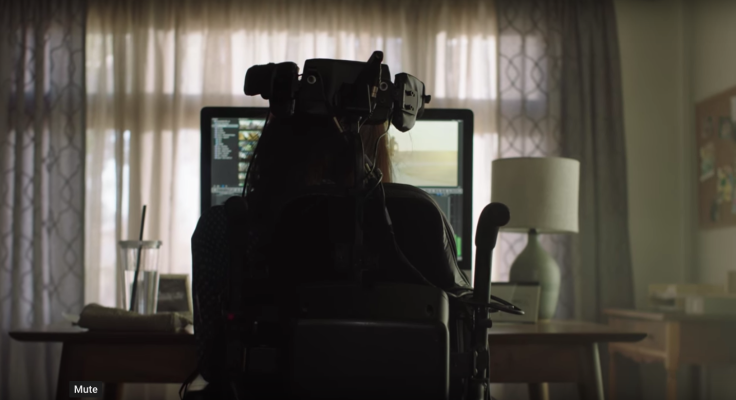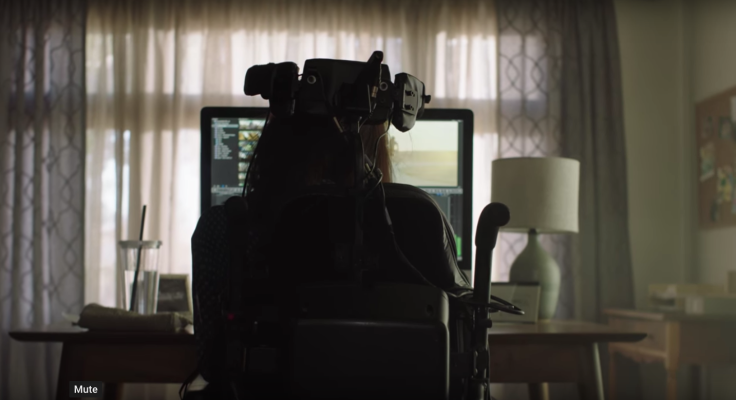
From an accessibility news standpoint, this week’s Apple event in Chicago was antithetical to the October 2016 event. At the latter event, Apple began the presentation with a bang — showing the actual video being edited using Switch Control in Final Cut. Tim Cook came out afterwards to talk some about Apple’s commitment to serving the disabled community before unveiling the then-new accessibility page on the company’s website.
By contrast, the education-themed event in Chicago this week went by with barely a mention of accessibility. The only specific call-out came during Greg Joswiak’s time on stage talking about iPad, when he said “accessibility features make iPad a learning tool for everyone.”
That doesn’t mean, however, accessibility has no relevance to what was announced.
I was in the audience at Lane Tech College Prep on Tuesday covering the event. As a former special educator –and special education student — I watched with keen interest as Apple told their story around education. While Apple is targeting the mainstream, I came away with strong impressions on how Apple can make serious inroads in furthering special education as well.
It’s Called ‘Special’ for a Reason
Apple is obviously—rightfully—building their educational strategy towards mainstream students in mainstream classes. It’s a classic top-down approach: Teachers assign students work via handouts, for such activities as writing essays or completing science projects. This is the entire reason for Apple’s Classroom and Schoolwork apps. However well-designed, they lack an element.
Where they lack is there is nothing afforded, at least in specific terms, to teachers and students in special education settings. Apple’s strategy here is defined, again, by the classic teacher-student relationship, without any regard for other models. I’m not levying a criticism on the company; this is the reality.
At many levels, special education classrooms do not function in a way that’s conducive to Apple’s vision for learning at this time. In the moderate-to-severe early childhood (Pre-K) classrooms I worked in for close to a decade, the structure was such that most, if not all, activities were augmented by a heavy dose of adult support. Furthermore, most of our students were pulled out of class at certain times for additional services such as speech services and physical/occupational therapy sessions.
In short, there were no lectures or essay prompts anywhere.
This is where accessibility comes in. There is enormous potential for Apple to dig deeper and expand the toolset they offer to educators and students. To accommodate for special education is, in my view, akin to accommodating disabled users by offering accessibility features on each of Apple’s software platforms.
Special education is special for a reason. It involves ways of teaching and learning that are unique, and the people who work and learn in these environments deserve the same consideration.
Accessibility is Apple’s Secret Weapon
Leading up to the event, there was much talk in the Apple community of writers and podcasters that Google is eating Apple’s lunch in the schools market because Chromebooks are dirt cheap for districts and most everyone relies on Google Docs.
I’m not interested in the particulars of this argument. What I am interested in, however, is simply pointing out that despite the perception Apple products are too expensive and less capable, they are better in one meaningful sense: accessibility.
Consider Chromebook versus iPad. In many levels of special education, an iPad is far superior to a Chromebook. The tablet’s multi-touch user interface is far more intuitive, and more importantly, iOS is built with accessibility in mind. From VoiceOver to Dynamic Type to Switch Control and more, an iPad (or an iPod Touch, for that matter) can provide a far more accessible and enriching learning experience for many students with disabilities than a Chromebook. And lest we forget the App Store effect; there are many outstanding apps geared for special ed.
This is a crucial point that many technology pundits who lament Apple’s position in the education market always seem to miss.
Making Special Educators More Special
One area where Apple can greatly improve the lives of teachers is by broadening the Schoolwork app such that it makes IEP prep easier and, playing to Apple’s core strength, more modern. Historically, even today, IEPs are planned and written using stacks of paperwork. Goals, assessments, and consent forms are handwritten (sometimes typed) and stapled together. And being a binding legal document, teachers must ensure there are the proper signatures on every page, or else be dinged for being out of compliance with protocols. In sum: the IEP is the bane of every special educator’s existence because they take so much time.
To this end, Apple could do special education teachers a grand service by adding a module of sorts to its Schoolwork app that would allow them to more easily create and track a student’s IEP. There could be charts for tracking goal progress, as well as ways to collate and distribute documents amongst the IEP team (SLPs, OT/PT, etc) and of course parents. Teachers could even send an email to parents with any consent forms attached and encourage them to sign with Apple Pencil on their iPad, if they have one.
At the very least, it would make IEP prep infinitely more efficient, and perhaps alleviate some of the stress at the actual meetings. Digitizing the process would be game-changing, I think.
Bottom Line
The ideas I’ve outlined here are well within Apple’s wheelhouse. They would likely need to collaborate with special educators and districts on things like IEP forms and policies, but it is certainly within them to do so. They can do this if they want.
To reiterate an earlier point, special education deserves just as much thoughtful consideration and innovation as the education industry at large. Given Apple’s unwavering support of accessibility, this is an area in which they can surely improve.


